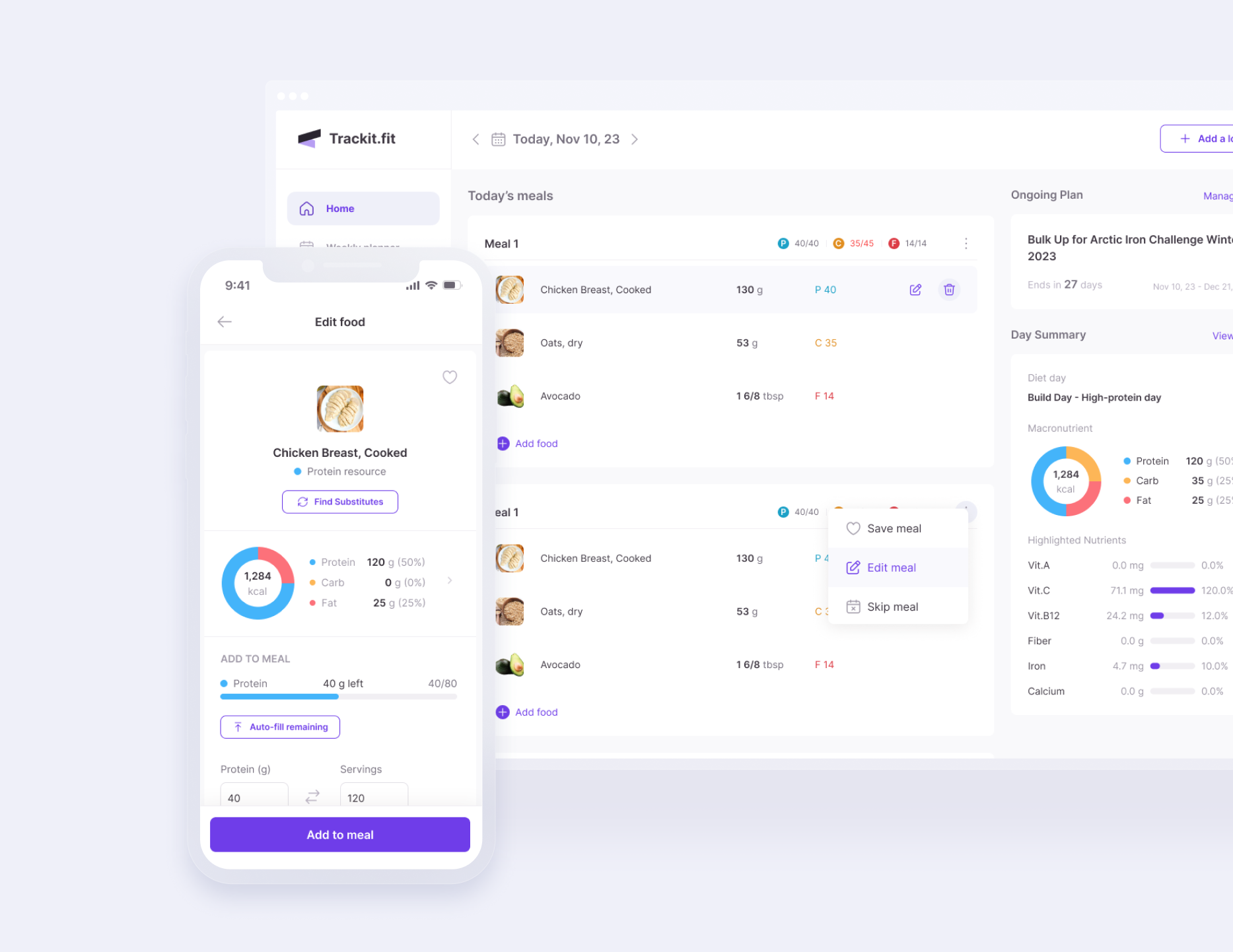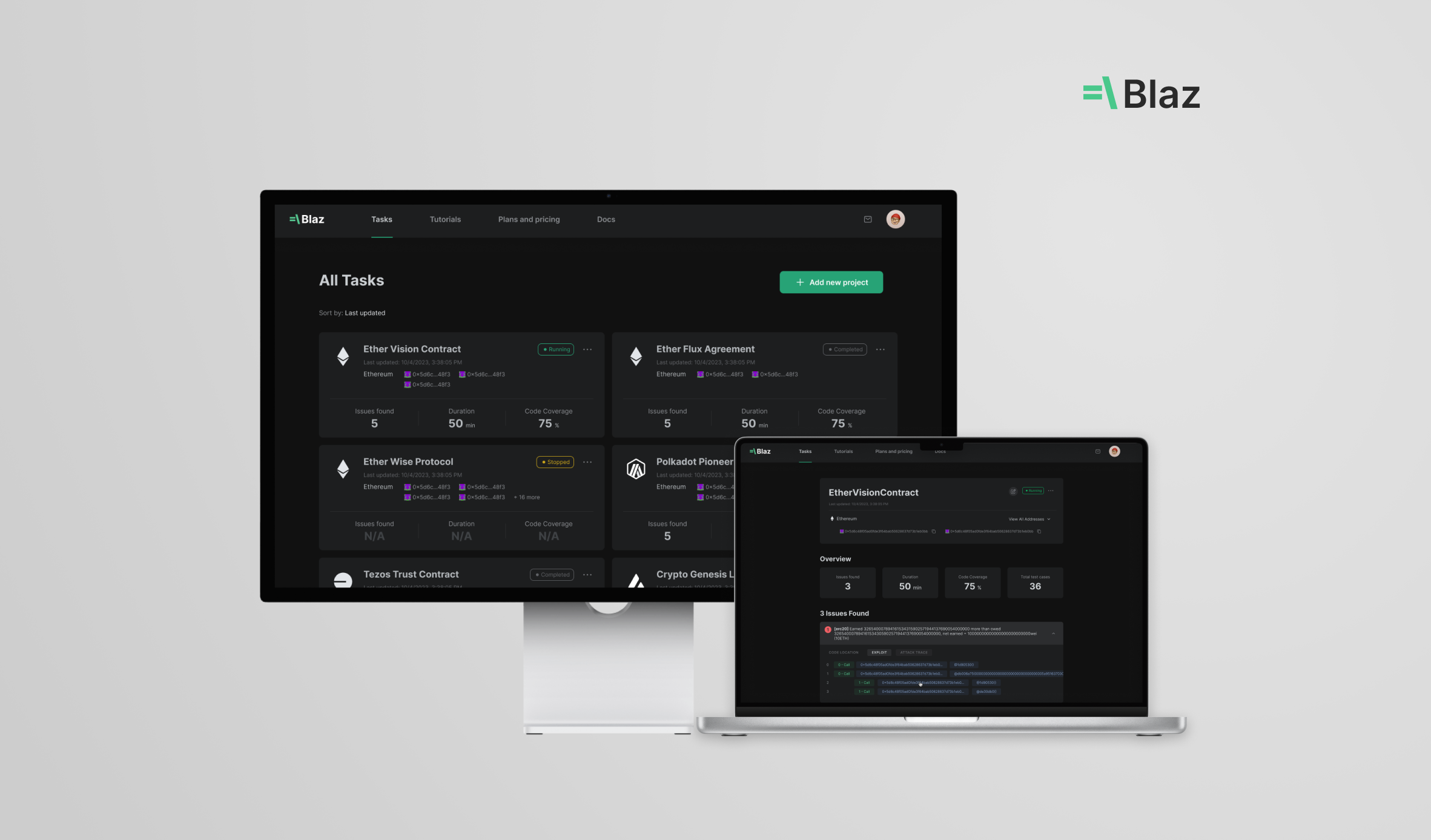
1 Product Manager
4 Engineers
Blaz.ai: Pioneering Smart Contract Security with Enhanced Fuzzing and Formal Verification
Overview
In the Winter of 2023, I joined the team at Blaz.ai as a contract UX/UI Designer, tasked with developing the MVP for a new smart contract fuzzing tool. The primary challenges included tight deadlines, a complex subject matter, and the initial absence of a structured design framework.
Project Impact
The Blaz.ai MVP significantly enhanced the efficiency and effectiveness of smart contract security testing, leading to faster and more frequent testing cycles. It also established a flexible design framework that support future enhancements by creating a design system. The project has received positive feedback from both users and stakeholders, highlighting its success and impact.
My Roles
UX/UI Design: Leading the design from concept through to high-fidelity prototypes, focusing on usability and responsiveness.
User Research: Conducting in-depth analysis to tailor the tool for experienced blockchain professionals.
Collaboration: Working closely with developers, researchers, and management to align design and technical specifications.
Feedback Integration: Implementing stakeholder and user feedback to refine the product continuously.
Documentation and Communication: Maintaining detailed records and regularly presenting updates to ensure team alignment and informed decision-making.
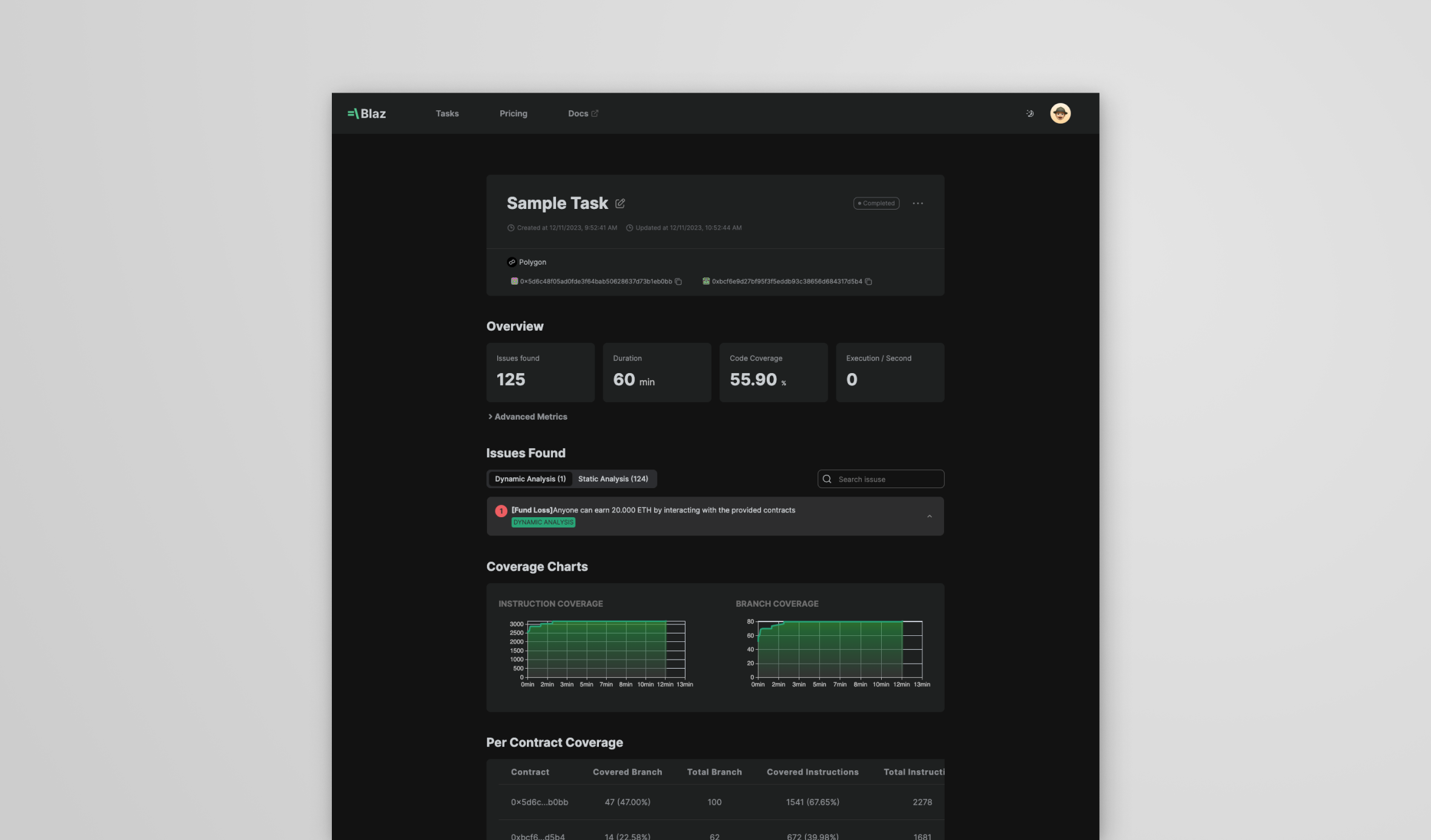
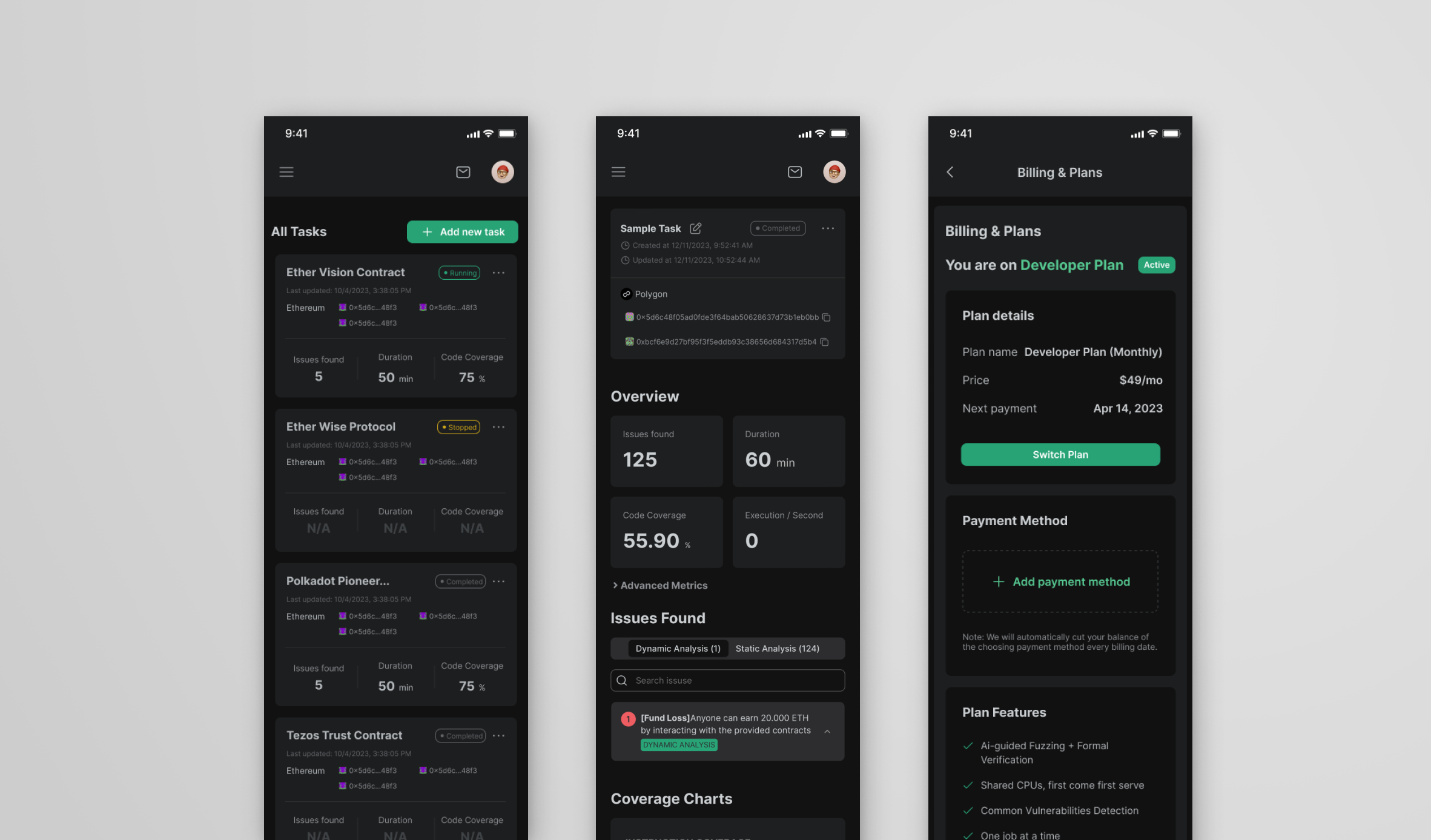
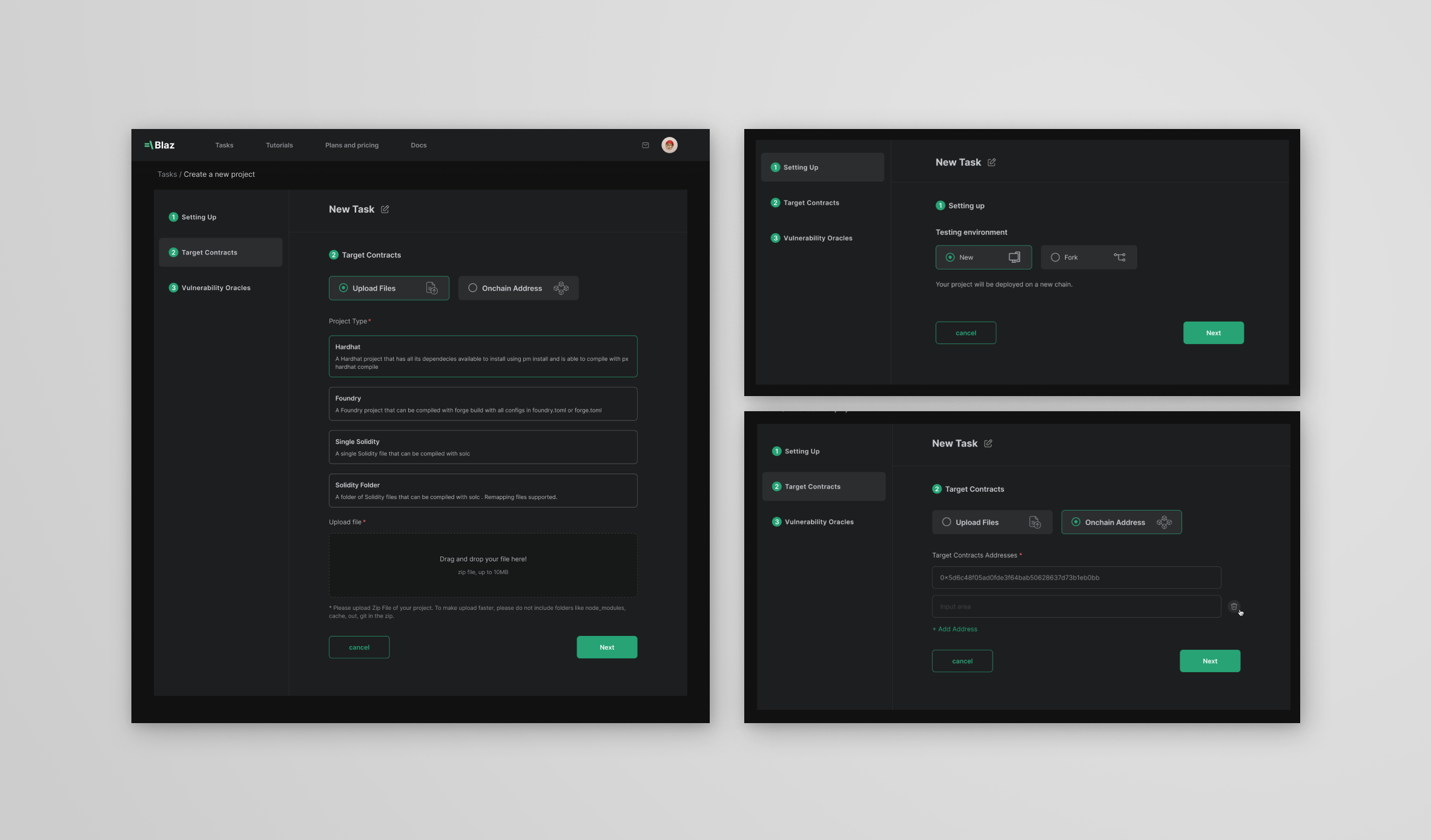
Understanding
The users,
Professionals in Smart Contract Management
I conducted interviews and workshops with product managers and founders to define our primary users and understand what their day-to-day is like.
Our target users are professionals including blockchain developers, security auditors, and product managers who regularly deal with smart contracts, which involves a lot of repetitive work in their workflow. Therefore, reinforcing efficiency and clarity in their work processes was a key focus.
User Interface Efficiency
The ability to easily navigate between tasks without losing context is essential for productivity, particularly for users managing multiple projects.
Reduce Learning Curve
Given the complexity of smart contract, Insights emphasize simplifying the interface for supporting users with varying levels of expertise.
Integration and Scalability
The tool's capability to scale up features gradually is vital for accommodating growth and expanding user requirements.
Current solutions in the market
High Learning Curves and Interface Challenges in Current Fuzzing Tools
During our market research on smart contract fuzzing tools, we discovered significant differences in the setup processes among various products. Many tools suffered from steep learning curves or clunky interfaces. Some tools requires users to have a strong understanding of version control systems and coding, which can complicate what should be straightforward fuzzing tasks. This increases the learning curve and can lead to inefficiencies in daily operations.
The Challenge
Enhance the efficiency and usability of smart contract fuzzing for experienced professionals.
Information Architecture
A User Flow Chart for Clear Team Alignment and Efficient Design
To better understand and align our team on the product we're building, I've created a detailed flow chart that shows every step a user can take within our app. This chart outlines the key features and how users interact with them, which helps us identify design priorities and plan our development strategy more effectively. This method enhances our design process by ensuring that product managers, engineers, and designers are all aligned with our goals.
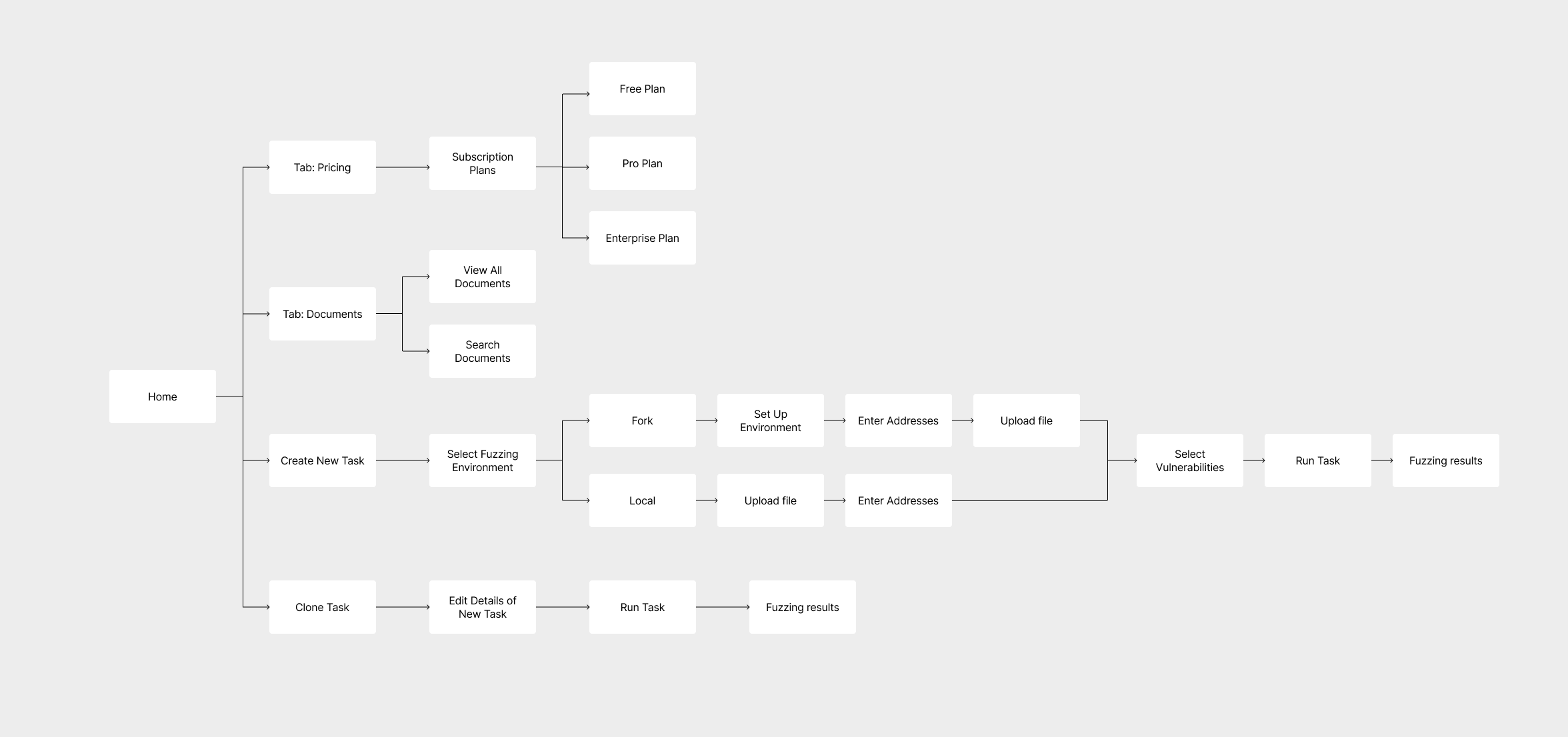
Designing phase
Homepage Design: efficiently displays tasks, offers clear task details, and provides quick actions for streamlined user interaction
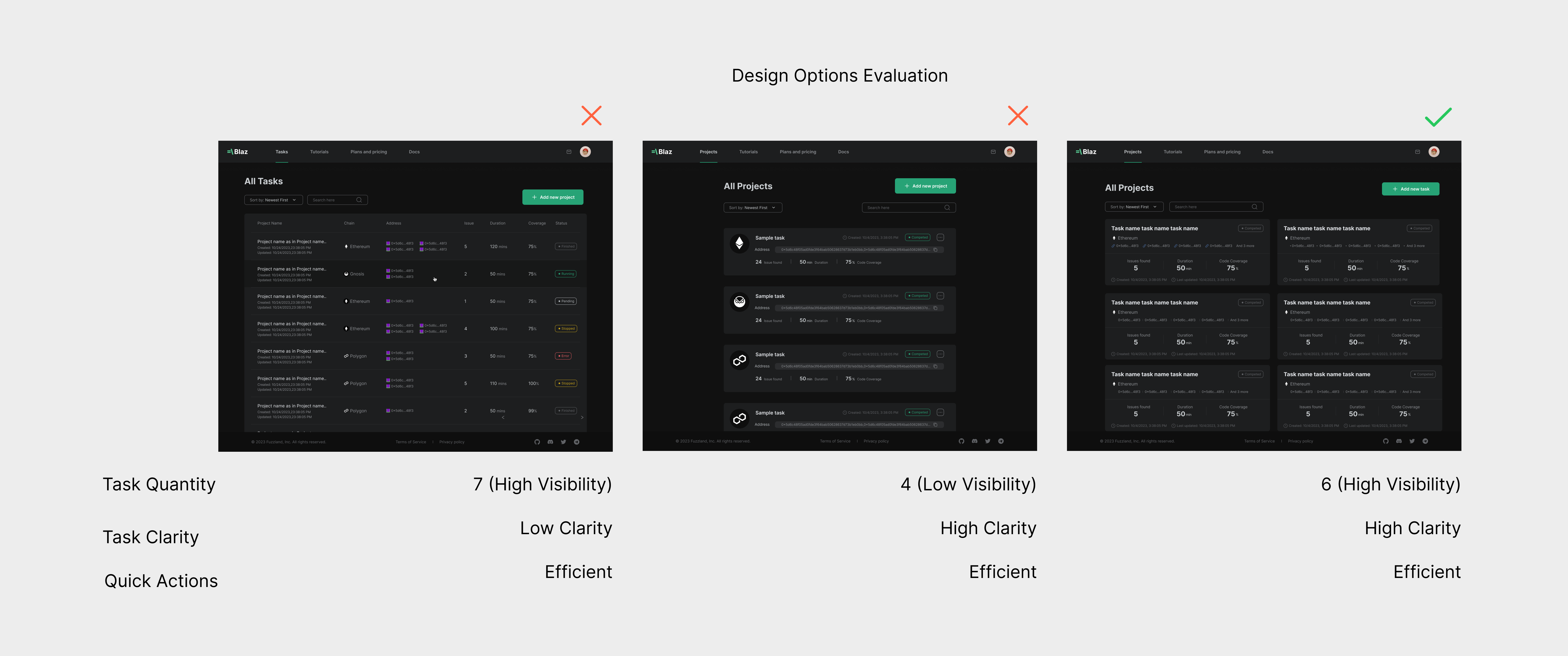
As part of the design preparation, I collaborated with the product manager to create a detailed flowchart, clarifying the task creation process in Blaz.ai. This visual representation ensured that the entire team was aligned before we began any initial design work.
Creating new task flow
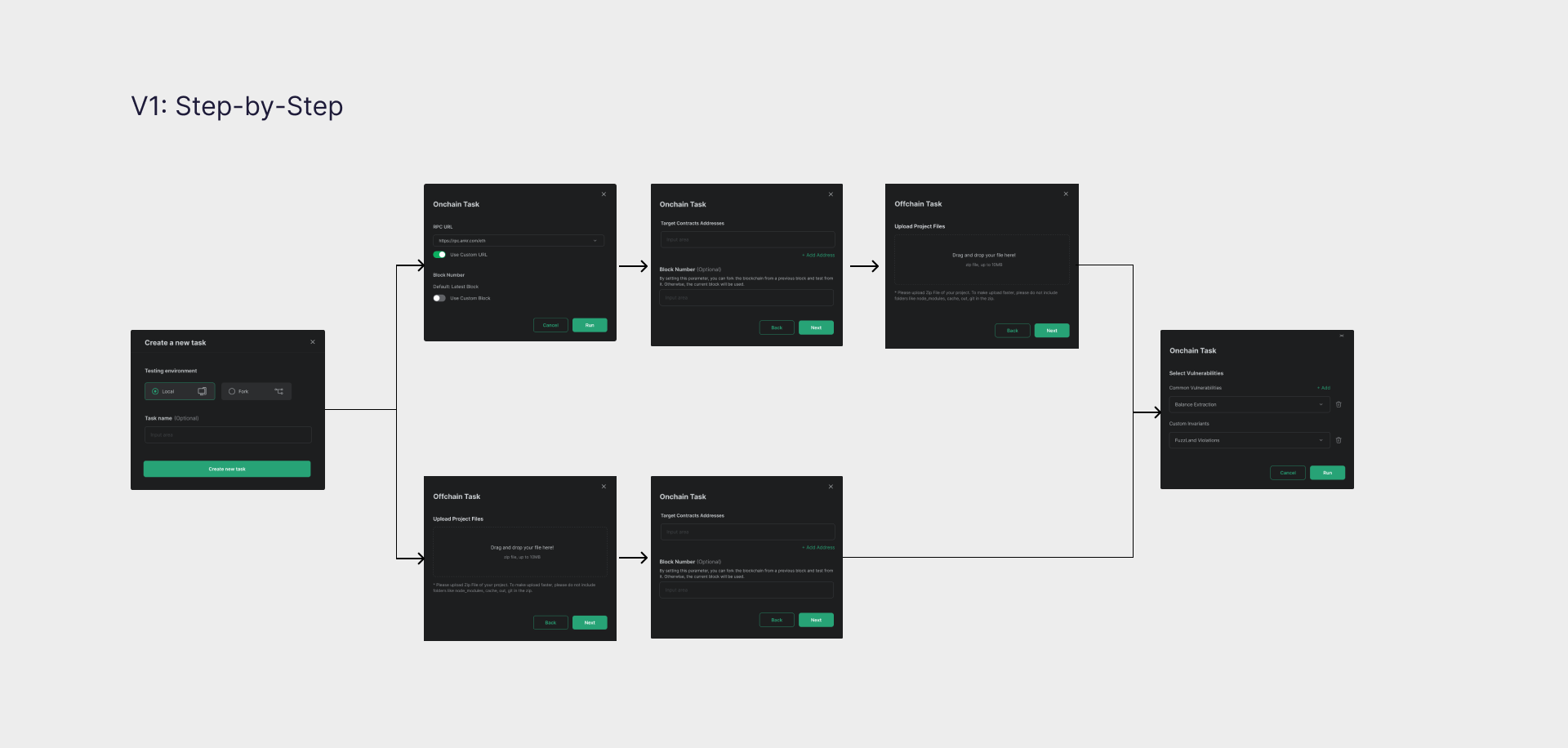
During the initial phase, our wireframe presented food selection through various categories, such as "My Favorites" and "All Meat," organized in both horizontal and vertical formats. User feedback from usability testing revealed this approach was confusing, with many preferring the search function for simplicity. Responding to this, we streamlined the categorization, focusing on fewer categories and bringing recently used items to the forefront for easier access.
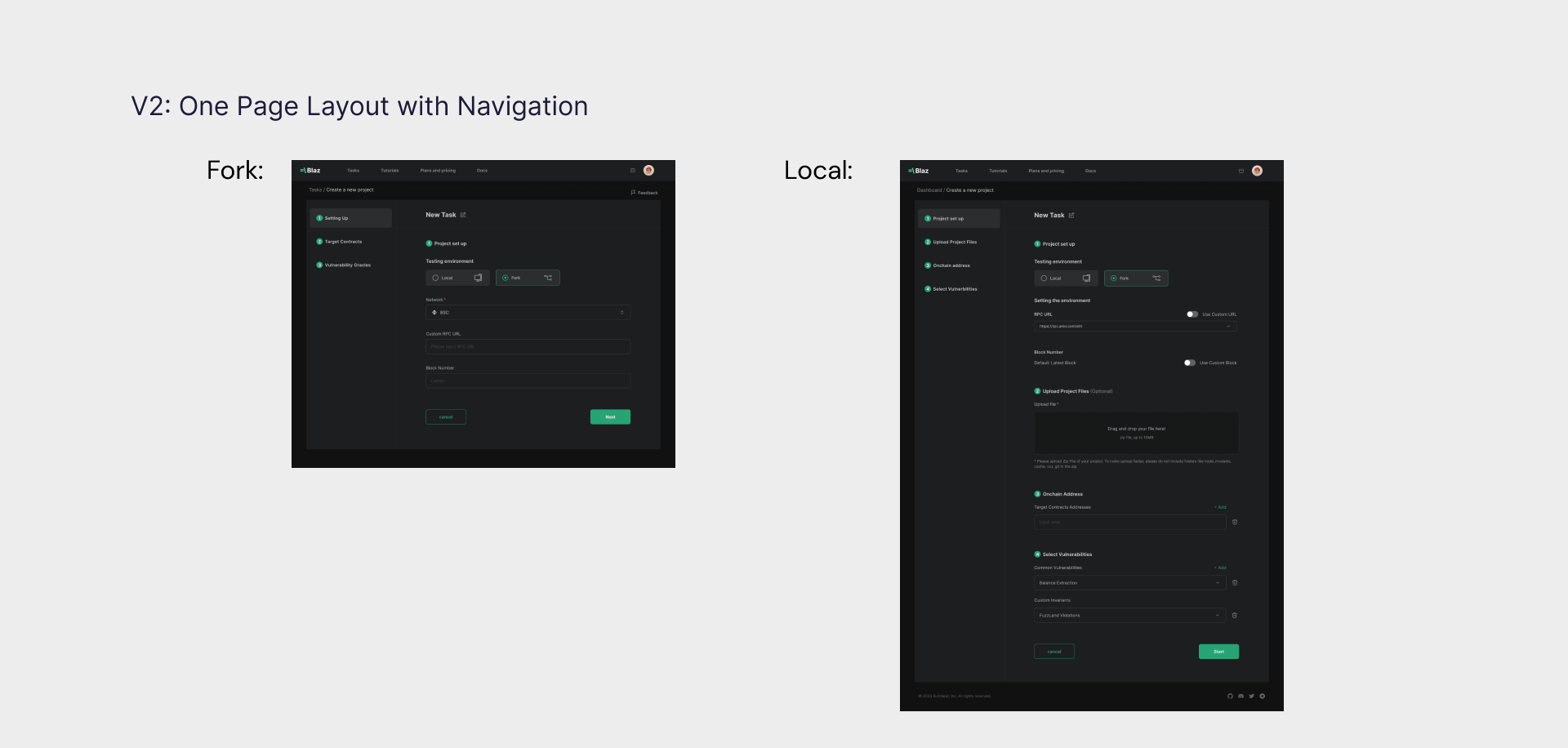
During the initial phase, our wireframe presented food selection through various categories, such as "My Favorites" and "All Meat," organized in both horizontal and vertical formats. User feedback from usability testing revealed this approach was confusing, with many preferring the search function for simplicity. Responding to this, we streamlined the categorization, focusing on fewer categories and bringing recently used items to the forefront for easier access.
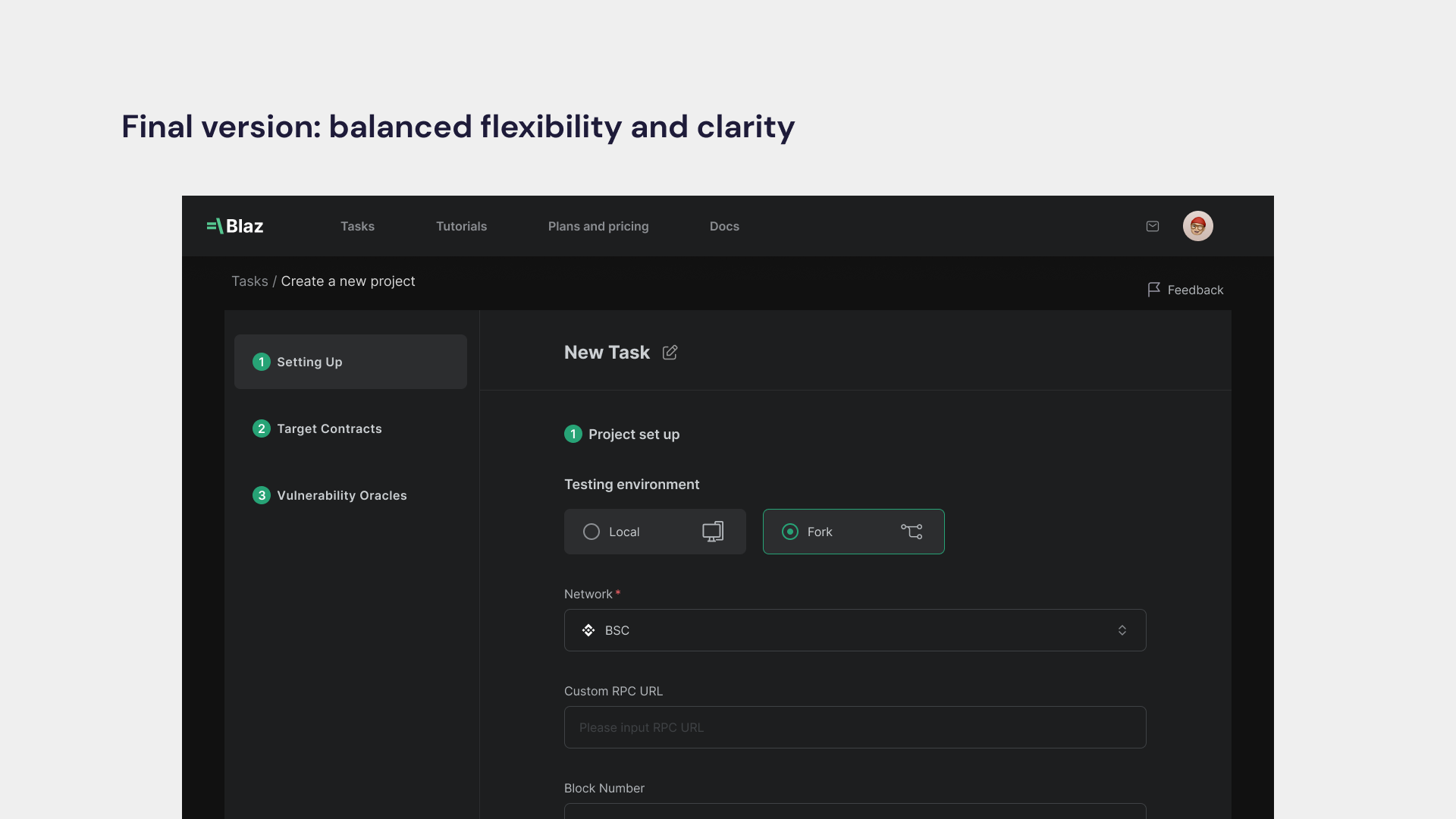
During the initial phase, our wireframe presented food selection through various categories, such as "My Favorites" and "All Meat," organized in both horizontal and vertical formats. User feedback from usability testing revealed this approach was confusing, with many preferring the search function for simplicity. Responding to this, we streamlined the categorization, focusing on fewer categories and bringing recently used items to the forefront for easier access.
Design System
Design with Scalability, Streamline the Design + Dev Process
When I began this project, there were no design files since everything was initially built with code. As this is the MVP of Blaz.ai, we're focusing on ensuring that the development is efficient, the user interface remains consistent, and the system is scalable for easily adding new features later
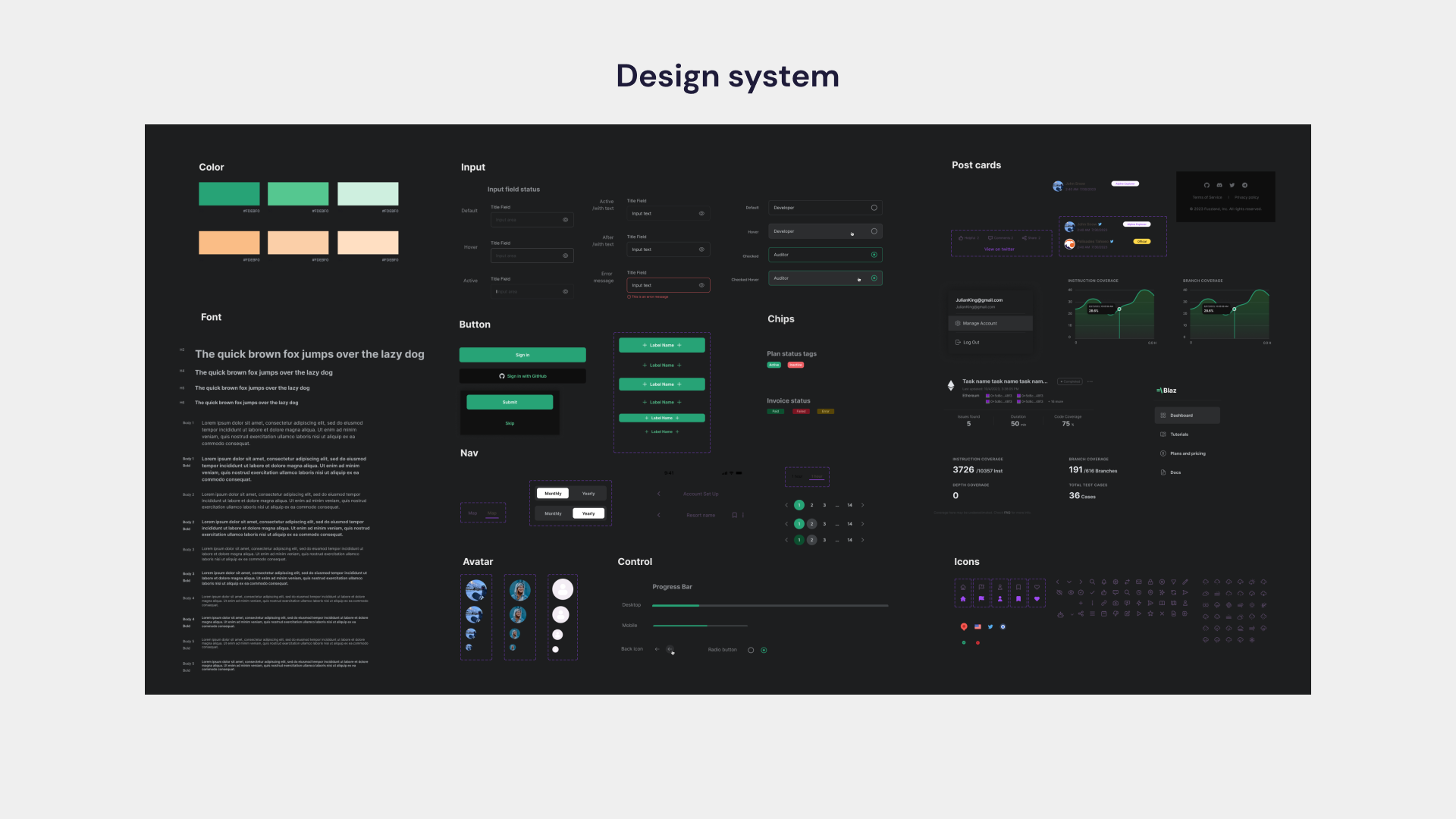
Beta testing
Tracking and Improving Blaz.ai Through Beta Testing Insights
While I was not directly involved in the beta testing phase of the Blaz.ai project due to my role as a contractor, it's important to consider the potential impacts and improvements that could be gleaned from this critical testing phase.
Key Metrics to Track:
User Engagement: Monitor how frequently and for how long users interact with the tool. This helps identify which features are most used and which may require further refinement.
Error Rates: Track the number and type of errors encountered by users. High error rates could indicate interface problems or functionality issues that need attention.
User Satisfaction: Gather qualitative feedback through surveys or interviews to assess user satisfaction with the overall experience and specific features.
Reflection
Reflecting on the Journey: Insights and Growth from the Blaz.ai Project
Feedback is InvaluableIncorporating feedback from not only stakeholders, or team members, but also users lead to significant improvements in the design. Even just small changes.
Prioritization of FeaturesAlthough we received lots of feedback from all kinds of sources during the whole designing process, distinguishing must-have features from nice-to-haves is very important, and this could not have been achieved without prioritizing features and tasks effectively. I am very thankful for the collaborative effort that enabled us to complete the entire design within four months, which I find impressive.
Documentation and CommunicationKeeping clear records of decisions, design changes, and feedback received during the iteration process can boost efficiency. It makes sure the valuable insights are preserved for future reference. sometimes, an earlier concept or draft can offer unexpected insights or solutions beneficial to our current design challenges.



